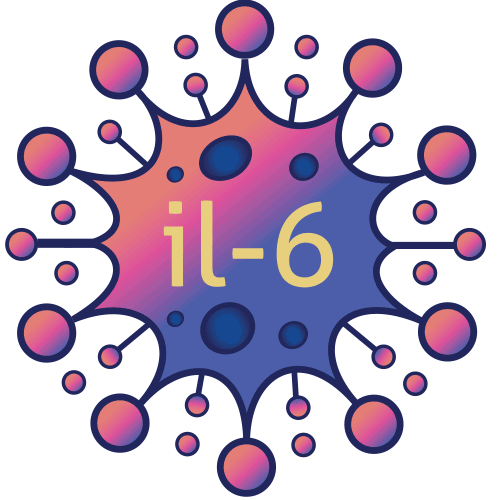The Amygdala: The Link to IL-6
- From The Mind of AI

- Nov 17, 2024
- 3 min read
Updated: Dec 12, 2024

Interleukin-6 (IL-6), a key pro-inflammatory cytokine, plays an essential role in the immune response but is also closely linked to neuroinflammation and mental health. The amygdala, a brain region involved in emotion regulation, fear responses, and stress processing, is particularly sensitive to changes in IL-6 levels. Elevated IL-6 can influence the function of the amygdala and its connections to other brain regions, leading to increased emotional reactivity, stress, and anxiety.
How IL-6 Affects the Amygdala:
Neuroinflammation:
IL-6 contributes to neuroinflammation, which affects the amygdala's function. Inflammatory processes in the brain can lead to hyperactivation of the amygdala, making it more sensitive to emotional stimuli and stress. This hyperactivity can result in heightened anxiety, fear responses, and increased emotional volatility.
Chronic inflammation due to persistently high IL-6 levels can alter the structure of the amygdala, potentially leading to neurodegenerative changes and a reduced ability to regulate emotions effectively.
Impact on Emotion and Stress:
Studies have shown that increased IL-6 levels are associated with amygdala hyperactivity during emotional processing, particularly in stressful situations. This can cause exaggerated emotional responses, leading to heightened experiences of fear, anger, or sadness.
Elevated IL-6 levels can disrupt the hypothalamic-pituitary-adrenal (HPA) axis, which governs the body’s stress response. This disruption increases cortisol levels, further amplifying the amygdala's sensitivity to stress and emotional triggers, creating a cycle of chronic stress and inflammation.
Mental Health Disorders:
The combination of increased IL-6 and amygdala dysregulation has been linked to various mental health disorders, including anxiety, depression, post-traumatic stress disorder (PTSD), and bipolar disorder. Elevated IL-6 levels have been observed in individuals with these conditions, correlating with increased amygdala activity.
Anxiety disorders are particularly influenced by heightened amygdala activation, and IL-6-driven inflammation is thought to exacerbate symptoms by impairing emotional regulation and increasing fear responses.
Amygdala's Connection with Prefrontal Cortex:
The prefrontal cortex (PFC) plays a crucial role in regulating the amygdala's activity. When IL-6 levels are elevated, the PFC’s ability to regulate the amygdala can become impaired, leading to impaired decision-making, emotional control, and impulse regulation.
Cognitive dysfunctions related to mood regulation, such as rumination and obsessive thinking, are often seen when the PFC-amygdala connectivity is disrupted by inflammation.
Reducing IL-6 Levels to Support Amygdala Health:
Anti-Inflammatory Interventions:
Dietary changes, such as increasing omega-3 fatty acids, curcumin, and antioxidant-rich foods, have been shown to reduce IL-6 levels and help mitigate neuroinflammation. These changes may improve emotional regulation by reducing the hyperactivity of the amygdala.
Exercise:
Regular physical activity can lower IL-6 levels and improve neuroplasticity, helping to normalize amygdala activity and reduce emotional reactivity. Mind-body practices, like yoga or tai chi, are particularly effective in reducing stress and inflammation.
Stress Management Techniques:
Mindfulness and meditation can help lower cortisol and IL-6 levels, reducing the inflammatory impact on the brain and enhancing the regulation of the amygdala by the prefrontal cortex. These techniques can promote greater emotional stability and resilience in the face of stress.
Conclusion:
Elevated IL-6 levels can significantly impact the amygdala, leading to increased emotional reactivity, stress sensitivity, and a higher risk of developing mental health disorders. Managing IL-6 through lifestyle interventions, such as diet, exercise, and stress reduction, can help restore emotional balance and support mental well-being.




Comments